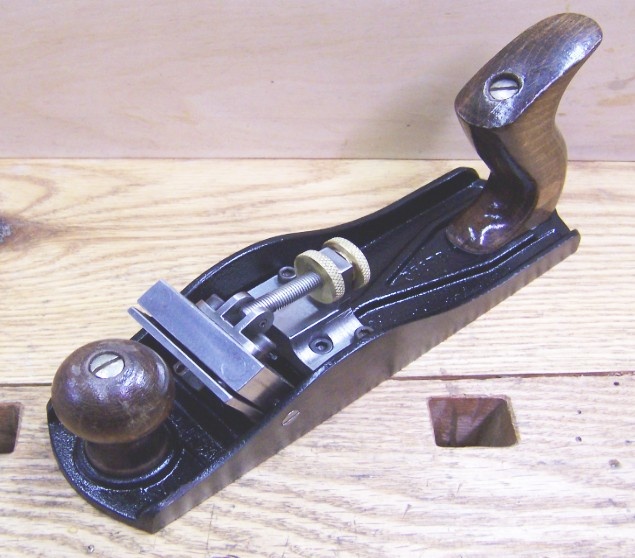 Several years ago an inquiry arrived about dimensions and tips for
making the No.4 Scraper Plane. I replied encouragingly and then heard
nothing for a long time. The other day, this nice picture arrived in
my Inbox, along with an explanation of why it took so long ... this is
the second clone ! The first met an untimely end at the hands of a
John Doe before it was even done. Several years ago an inquiry arrived about dimensions and tips for
making the No.4 Scraper Plane. I replied encouragingly and then heard
nothing for a long time. The other day, this nice picture arrived in
my Inbox, along with an explanation of why it took so long ... this is
the second clone ! The first met an untimely end at the hands of a
John Doe before it was even done.George Allchin made the plane at left based on the sketchiest of details (no drawings). I can see that George started with a very late model English Stanley plane, the kind one sends to one's In-Laws when nothing else seems quite right. George wisely left out the adjustable tote that nearly wore me out. Just keep some Band-Aids handy for the occasional scrape. He also left out the rabbet mouth, which will help smooth out the learning curve by avoiding breakage from mal-adjustment of the cutter. Here are some notes about using the plane that I made for George's benefit: 1. Operation of the plane centers around the blade. Practice sharpening and forming the hook. I use a 45 degree bevel for the initial sharpening, and then I use a round burnisher to form the hook. Be quite gentle at first, as it's too easy to form too much of a curl. 2. If your first hacksaw blade seems not to work, try another style. You do not have to wear out the original hacksaw blade before cutting it up. That'll save hacksawing a couple hundred feet of quarter inch steel ... I like bimetallic blades (HSS teeth, carbon steel back). "Unbreakable" blades have softer backs than the ordinary kind. 3. You may want to crown the blade slightly by putting a shim under the middle or by grinding the edge into a curve, reminiscent of a scrub plane, if the straight blade leaves lines in the work. 4. Usage will be kinder to your plane if you avoid planing against the free edge of the workpiece, which gives the mechanism a nasty shock. You can avoid tearout by planing out at a shallow angle or parallel to the edge. The wood doesn't care whether you plane with or against the grain. |